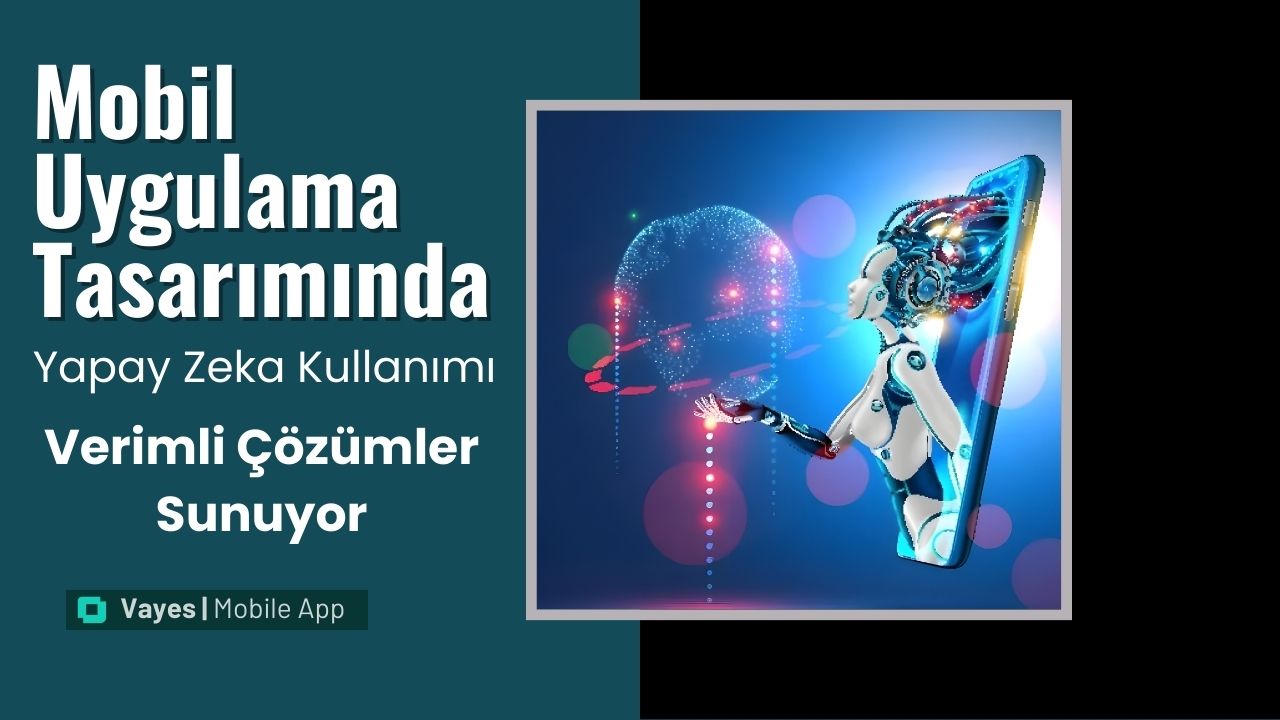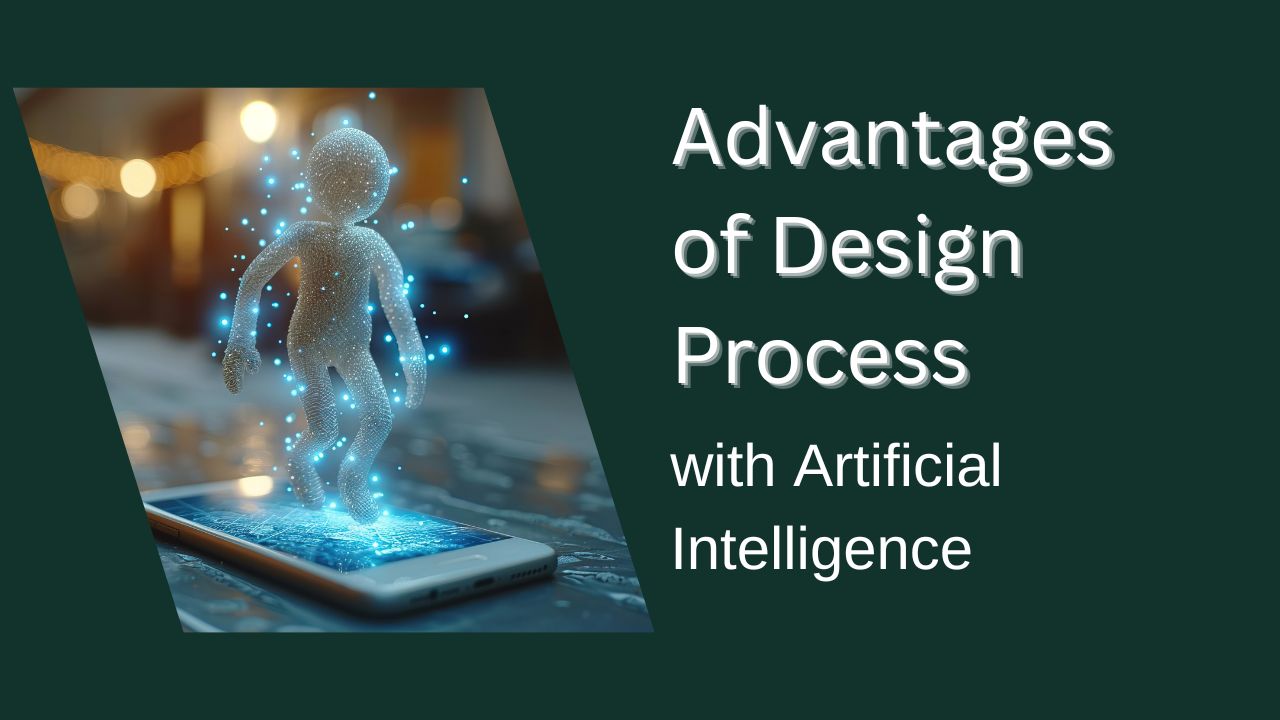Hello,
How Can We Help You?
Contact Form
Fill out the form and we will contact you as quickly as possible.
|

In today’s digital era, mobile apps have become an indispensable part of our lives. With rising user expectations, design processes have grown more complex and time-consuming. This is where artificial intelligence steps in, reshaping mobile app design. As of 2025, using artificial intelligence in mobile app design delivers efficient solutions, offering significant benefits to both developers and users. The design world is undergoing constant transformation with the rapid advancement of this technology. Users now demand apps that are not only functional but also aesthetically pleasing and personalized. Artificial intelligence makes design processes smarter and more accessible to meet these demands.
Artificial intelligence in mobile app design offers an innovative approach that blends aesthetics and functionality. It handles a wide range of tasks, from optimizing user interfaces to determining color palettes. For example, machine learning algorithms analyze user behavior to reveal which designs attract more attention. This enables designers to create more effective and user-friendly interfaces. Artificial intelligence considers not only visual elements but also functional details that enhance the user experience.
Traditional design methods often require lengthy periods and rely on manual efforts. However, artificial intelligence automates these processes, saving time and minimizing human error. It can instantly evaluate user feedback and make design improvements. Beyond that, AI tools support designers’ creative processes by providing suggestions. For instance, it can analyze which buttons are more accessible on an app’s main screen and suggest the best layout. Such innovations make the design process more efficient and dynamic.

Artificial intelligence shapes mobile app design with new trends in 2025. The capabilities this technology offers are revolutionizing the design world. Here are some of the standout design trends of this year:
These trends showcase how artificial intelligence is transforming design. Users now expect apps to be visually appealing while quickly addressing their daily needs. Artificial intelligence makes design processes more flexible and innovative to meet these expectations. For example, a fitness app can personalize its interface based on a user’s workout habits. Such advancements help mobile apps build a deeper connection with users.
Artificial intelligence revolutionizes the design process and delivers a range of benefits. Designers can delegate complex data analysis to AI, allowing them to focus on creative aspects. Insights gained from user data enable faster and more accurate decisions. This not only speeds up the design process but also produces more consistent and effective outcomes.
Creating design prototypes now takes minutes instead of hours. Artificial intelligence tools automatically generate multiple design variations, accelerating the selection of the best option. This shortens project delivery times and reduces costs. For example, when designing an e-commerce app’s homepage, AI can analyze which layouts users prefer and present the optimal choice. At the same time, artificial intelligence plays an active role in testing. It evaluates designs’ performance across different devices and suggests adjustments.
User-centricity stands out as one of the greatest advantages offered by artificial intelligence. Designers can better understand user needs and craft tailored solutions using AI. In a music app, artificial intelligence can analyze which genres are most listened to and optimize the interface accordingly. Such features make the design process both more efficient and user-friendly.
Artificial intelligence transforms mobile app design across various industries. Here are some examples and innovations:
Education: Educational apps offer personalized learning experiences with artificial intelligence. For instance, a language learning app adjusts its interface based on the user’s proficiency level. Dynamic design changes according to a student’s learning pace and style make education more effective.
E-commerce: using artificial intelligence in mobile app design creates customer-focused interfaces in shopping apps. Dynamic designs that suggest products based on past purchases stand out. In a fashion app, AI can analyze users’ color preferences and adapt the interface accordingly.
Healthcare: Healthcare apps integrate voice assistants to simplify patient monitoring. Interfaces are designed to be user-friendly and accessible. For example, a health tracking app can offer larger icons and a simple layout for elderly users.
Gaming: Gaming apps leverage AI for more immersive and personalized designs. Interfaces and in-game experiences are optimized based on player preferences. A puzzle game can use artificial intelligence to adjust design elements according to the user’s difficulty level.
Using artificial intelligence in mobile app design will become even more widespread in the future. New technologies will make design processes smarter and faster. For example, the high speed of 5G will enable real-time design optimizations. Users will expect apps to adapt to their needs instantly.
Artificial intelligence equipped with emotional intelligence will adapt interfaces based on users’ moods. This will make a significant difference, especially in healthcare and wellness apps. In a meditation app, AI could analyze a user’s stress level and offer a calmer design. Designers will collaborate with artificial intelligence to produce more innovative and impactful solutions.
In the future, artificial intelligence will not only support the design process but also develop fully autonomous design systems. For instance, a business could input a few parameters, and AI could design an entire mobile app interface. This will enhance both speed and accessibility in the design world.
Artificial intelligence offers numerous conveniences in design processes but brings some challenges too. Data privacy emerges as one of the primary concerns. Analyzing user data can increase security risks. This requires designers and developers to implement stricter security measures.
Training artificial intelligence models demands substantial resources. For small-scale teams, this can pose a barrier. Accessing and processing large datasets can be a costly endeavor. Designers becoming overly reliant on AI might limit their creativity. If human input is entirely replaced by artificial intelligence, designs could lose their originality.
Beyond that, artificial intelligence doesn’t always produce accurate results, which presents another issue. For example, when designing an app’s interface, AI might overlook cultural differences. This could make users feel disconnected from the app. Designers can overcome such challenges by using artificial intelligence as a tool while applying their own expertise.
using artificial intelligence in mobile app design remains a powerful tool shaping the future of technology. This innovation streamlines design processes and elevates user experience to the next level. In the future, AI’s impact on the design world will grow even stronger, and mobile apps will claim a larger role in our lives. This technology will continue transforming the lives of both designers and users.
Contact Form
Fill out the form and we will contact you as quickly as possible.
 Notification Center 00:00
Notification Center 00:00